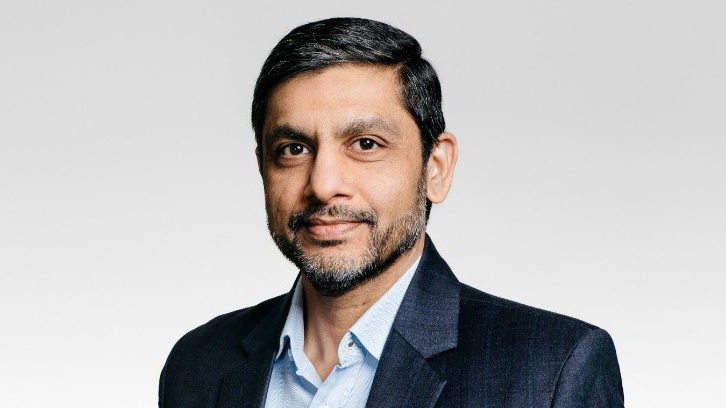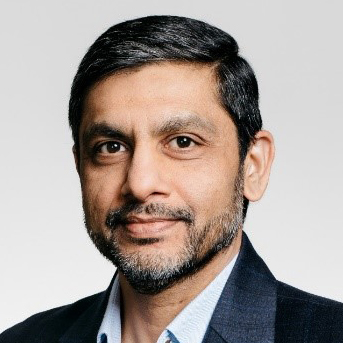5G deployment: go digital to get ahead
Sanjay Goel, President of Global Services at Nokia, reveals why automation and digitalization are critical to 5G deployment.

Digitalization throughout the 5G deployment process is critical. It is the only way to create a bespoke, holistic deployment experience for communication service providers (CSPs). 5G offers an extraordinary potential to CSPs and enterprises alike. But it requires meticulous orchestration of automation and digitalization throughout the deployment process. Without these elements we may see slow and fragmented deployments. So, how do we ensure fast, accurate and efficient deployments?
The reasons we must automate and digitalize
The adoption of automation, AI and the digitalization of build assets enables CSPs to respond to market demands much faster and help them capitalise the opportunity 5G brings. Automation and digitalization also empower the CSPs to monetise 5G in areas such as IoT and enterprise. Additionally, they can help mitigate operational complexity.
I’ve seen remarkable success in projects we have undertaken from the automation and digital transformation of processes. For instance, we can often reduce the total cycle time of the build process by up to 50% on average; that’s a dramatic decrease in a process that is both resource and cost intensive. This efficiency translates to significant return on investment for the CSPs. Also, digitalizing the build process means that CSPs have a digital database of all their existing assets. This makes it much easier to upgrade and expand in years to come.
However, CSPs cannot realise the benefits overnight. It’s crucial to execute deployment in progressive steps to achieve faster time-to-market. Also, CSPs need to to define a robust 5G strategy before initiating network rollouts. The most successful deployments are the ones that rely on this key principle. Success also lies in the adoption of a tailored end-to-end process. This would merge business requirements with network design to create the right blueprint of rollout.
CSPs should not execute 5G deployment as a series of independent “conveyor belt” style actions. It is a journey, connected by a series of interlocking steps. We can start to reap the benefits of efficient rollouts if we root these steps in automation-driven digital processes. Waste reduction, better quality, accuracy and transparency as well as improved health and safety processes, and reductions in total cost of ownership are all possible. This planning method will quickly bring services to end-customers, including enterprises. The speed will bring a much-needed competitive edge.
The route from traditional to digital goes via embedding automation and AI in the build process. Here are few examples which CSPs can put in place today:
- Site surveys. To provide CSPs with a database of digitised assets we have digitalized site surveys, all site activities and use 5G drones to capture high definition and detailed 3D mapping of 5G sites. We use the data from the surveys to measure and define the needed materials, leading to building the site ‘first time right’ with the correct material being at the right place at the right time. This makes a single site visit enough, accelerating the time-to-market and quality of delivery. To date Nokia has conducted thousands of drone site surveys. Converting regular site inspection to remote site survey – combined with the ability to resolve the issue remotely – can keep potentially threatening costs at bay.
- Remote inspection of site build. Augmented reality and virtual reality collaboration tools enable continuous inspection of the build process itself. This allows remote engineers to ensure quality and provide remote expertise and configuration management.
- Provision of visual and statistical online records. This enables teams to see project information, deliverables, and key (present and future) performance indicators (KPIs) for operations through a single pane of glass, creating greater transparency and effectiveness. Furthermore, the remote site build combined with the visual and statistical online records enables a ‘zero touch’ operational environment for 5G services.
- A uniform approach through complete workflow orchestration. A single platform can connect all processes and parties. The project team, including the CSP, have visibility into all work performed. The automated workflows build in accountability. This means the right crews with the right equipment arrive in time at the right place. Fragmented workforces and subcontractors are not desirable. It is essential to have one unified team that works seamlessly together, avoiding delay and confusion in the build process.
Efficiencies delivered
These are not hollow words and promises, there are tangible examples. In the US we have seen an average run rate increase by 30-50% and a site build time improvement of 50%. What’s more, we can upgrade digital networks in one click of a button, enabled through AI – as many as 15,000 sites at a time. You can imagine the savings that AI brings to the upgrade process here. It will surprise nobody to hear that automation and digitalization processes are now becoming mainstream in digital deployments around the world.
SIGN UP FOR E-MAIL NEWSLETTERS
Get up to speed with 5G, and discover the latest deals, news, and insight!
The future is digital
It’s clear that traditional methods have their limitations. By digitalizing the build, 5G strategies and plans become reality faster and more cost-efficiently. The adoption of automation, AI and the digitalization of assets are vital steps in the digital transformation that is essential for CSPs to capture the full potential of 5G.
Sanjay has 30 years of experience across the telecommunications, information technology and engineering industries. As the President of Global Services, Sanjay is responsible for the business that deploys, supports and operates communication service providers’ networks for the 5G era. Sanjay is also President of Nokia Operations, bringing his experience in strengthening operational excellence, digitalization and automation in Global Services to benefit the entire company. He is responsible for supply chain, procurement, quality and all supporting cross-company processes. Sanjay has Bachelor’s Degree in Engineering with a specialization in Electronics and Communications from Manipal Institute of Technology, India. He is currently based in Finland.

